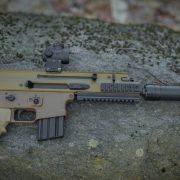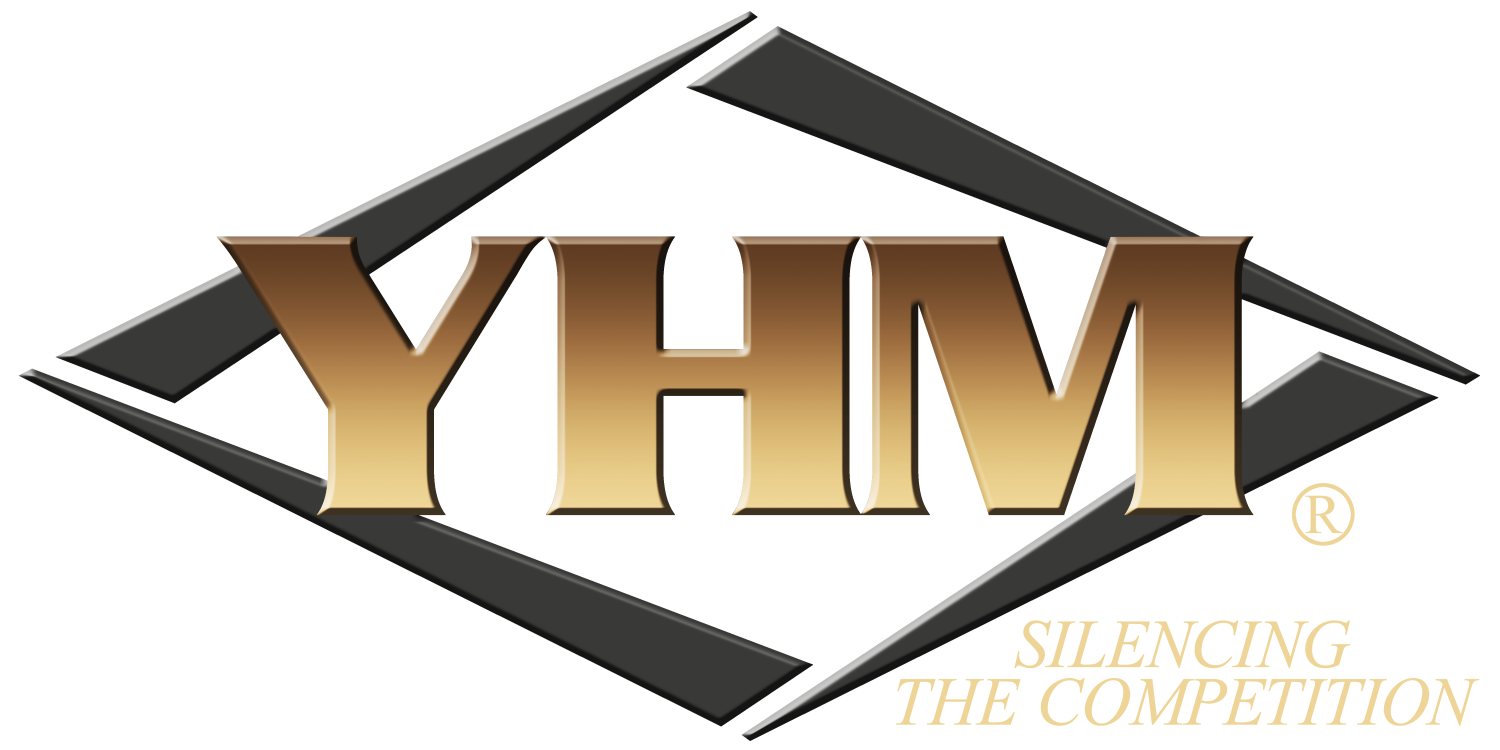Good afternoon everyone and welcome back to TFB’s Silencer Saturday brought to you by Yankee Hill Machine, manufacturers of the new YHM Turbo T3 rifle suppressor. Last week we took the B&T SQD RBS 9mm rifle suppressor out for a spin on the H&K MP5K sub-machine gun. This week we address a condition that afflicts thousands of men in America, and probably their partners too. Yes, I’m talking about living life with a super short barrel and the challenges of adding a silencer on the end. Step inside for your initial consultation.
More Short Barrels @ TFB:
- Kalashnikov USA releases the new KUSA KR-104 SBR
- XLR Industries ATOM Bolt Action Pistol/SBR Chassis
- Supersonic or Subsonic 300BLK SBR Defensive Ammo?
SILENCER SATURDAY #267: Living With A Super Short Barrel (TWSS)
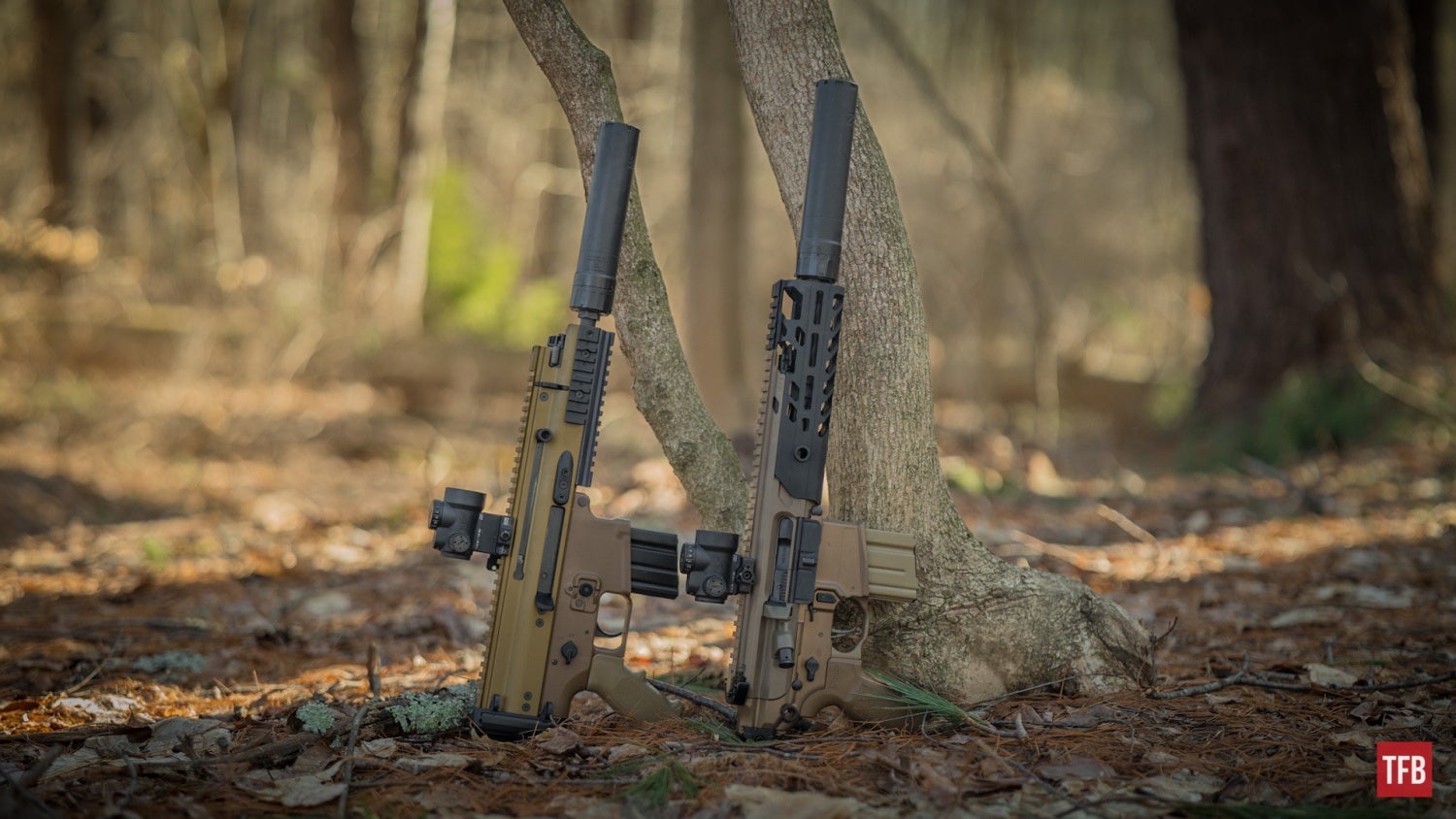
SILENCER SATURDAY #267: Living With A Super Short Barrel (TWSS)
The old adage of ‘it’s not the size that matters, it’s what you do with it’ is complete poppycock. If we are talking about barrel length, and indeed we are, more muzzle velocity is achieved with a longer barrel. In terms of lethality, speed is important because some bullets only fragment or expand above certain velocities. Velocity and terminal ballistics are the main reasons that many will suggest using supersonic rounds over subsonic rounds for hunting or defensive purposes – compare energy in ft/lbs of heavier, slower bullets to faster, lighter bullets and it all becomes pretty clear. Of course, if you are shooting for pure enjoyment, go ahead and rock out with your Glock out.
Speaking of fun, short barrel rifles (SBR) are awesome and can be quite handy as the useful tools that they are. But SBRs are one of the best examples of my favorite saying in the firearms world – ‘there is no free lunch’. The more compact the weapon, the shorter the barrel, the lower the muzzle velocity, the more unburned powder, the more flash, the more blast, and the more sound that is produced. All of those attributes will make you want to add a suppressor to your system to make the whole experience a lot more enjoyable, But hang on, there are a few things we need to consider first.
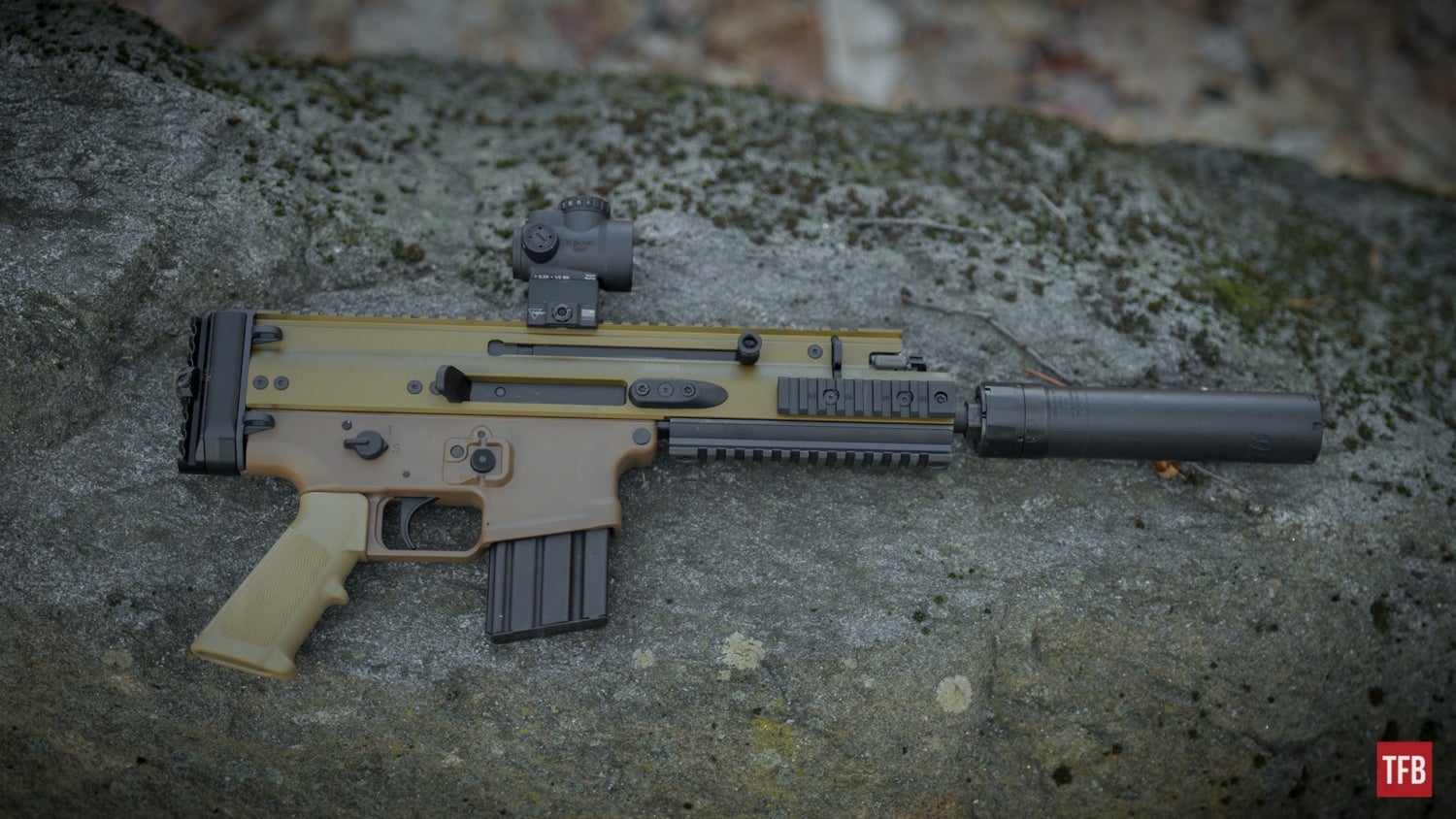
SILENCER SATURDAY #267: Living With A Super Short Barrel (TWSS)
Find a length that makes them happy, but isn’t unwieldily for you.
Before we get to the silencer, let’s look at the host weapon.
Every cartridge is designed around an optimal barrel length. As a bullet moves down the barrel, the powder burning behind it is creating more and more pressure until it explodes, or uncorks, out of the end of the barrel. Any remaining unburned powder ends up a useless waste of flash and noise. Before picking a barrel length, do some research into the round you are trying to suppress. For example, the 5.56x45mm rounds was designed around a 20″ barrel, but an optimum SBR barrel length – or sufficient velocity for most rounds – is somewhere between 11.5″ and 12.5″.
The 300BLK round, in comparison, was designed around a 9″ barrel length, with most rounds burning all their powder in the barrel before the bullet uncorks at the muzzle.
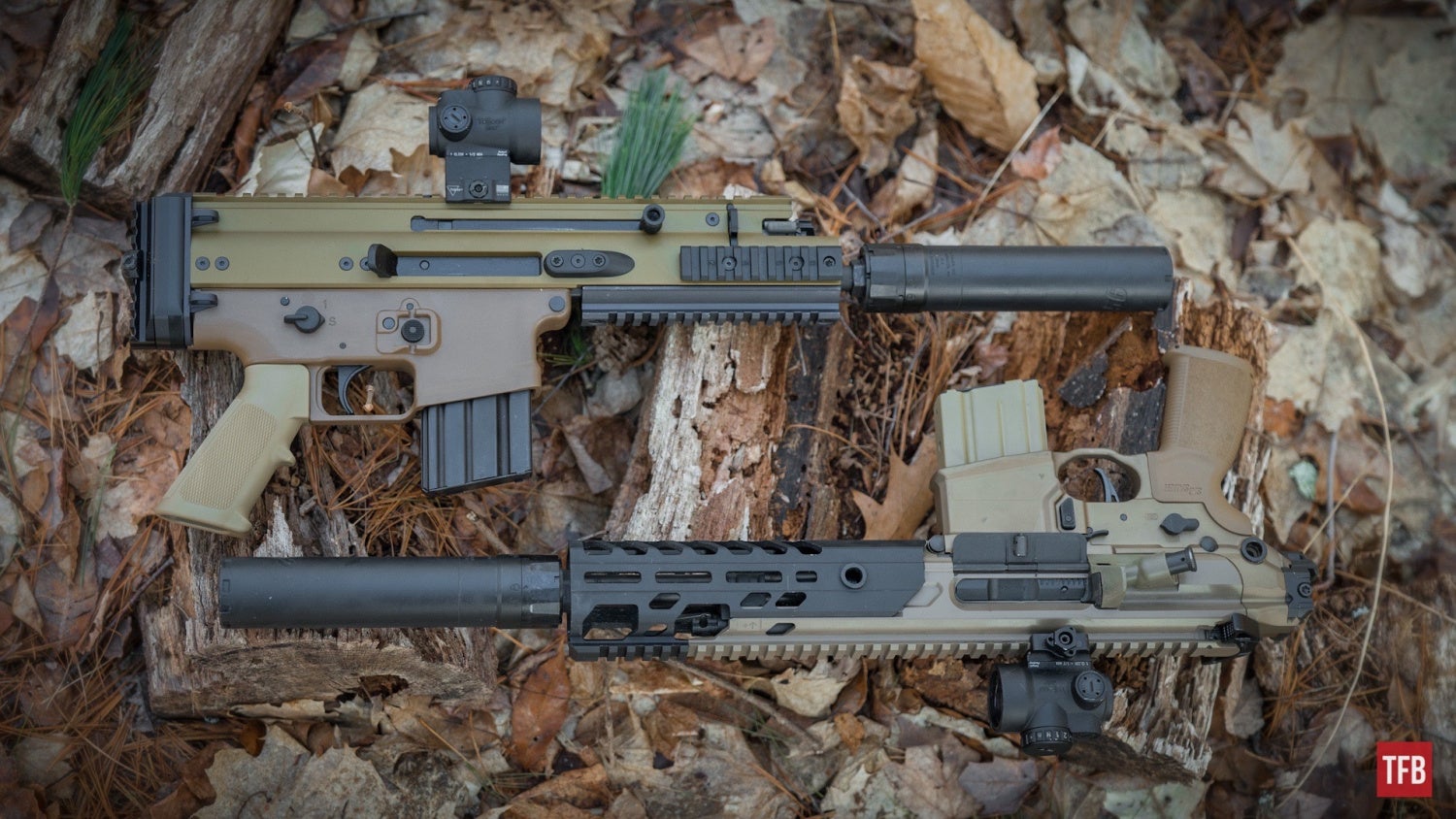
SILENCER SATURDAY #267: Living With A Super Short Barrel (TWSS)
How Much Length Can Your Suppressor Handle?
Or lack of length to be specific.
Besides a loss of bullet velocity, all of that unburned powder creates a lot of pressure that should have been expended on the bullet inside the barrel. That is pressure that your silencer will now have to handle. Let’s take a look at an experiment run by the silencer legend Dr. Dater (Gemtech) to get a better idea of the pressures your suppressor will deal with at varying barrel lengths.
EFFECTS OF BARREL LENGTH ON BORE PRESSURE, PROJECTILE VELOCITY AND SOUND MEASUREMENT – Dater, Philip H. MD; Wong, Jason M.; 2010
In the above picture, the FN SCAR 15-P chambered in 5.56mm has a barrel length of 7.5″. Most AR-15s sold in the U.S. have 16″ barrels, so the newest SCAR is more than half of a “standard” length and approximately 4″ shorter than an optimal SBR length.
But the muzzle pressure differences are huge. At 7″ the pressure is 17,000 pounds per square inch (psi) which is 1,000 psi more than the the pressure at the deepest part of the ocean (approx.36,000 ft; 16,000 psi). Adding 4″ of barrel length brings the muzzle pressure down to 10,500 psi.

EFFECTS OF BARREL LENGTH ON BORE PRESSURE, PROJECTILE VELOCITY AND SOUND MEASUREMENT – Dater, Philip H. MD; Wong, Jason M.; 2010
Visualizing the pressure/length data on a graph, it’s easy to see that it’ not a straight line – every inch added is an exponential savings in pressure.

EFFECTS OF BARREL LENGTH ON BORE PRESSURE, PROJECTILE VELOCITY AND SOUND MEASUREMENT – Dater, Philip H. MD; Wong, Jason M.; 2010
In the below graph, notice the slight plateau between 11-13″ of barrel length.
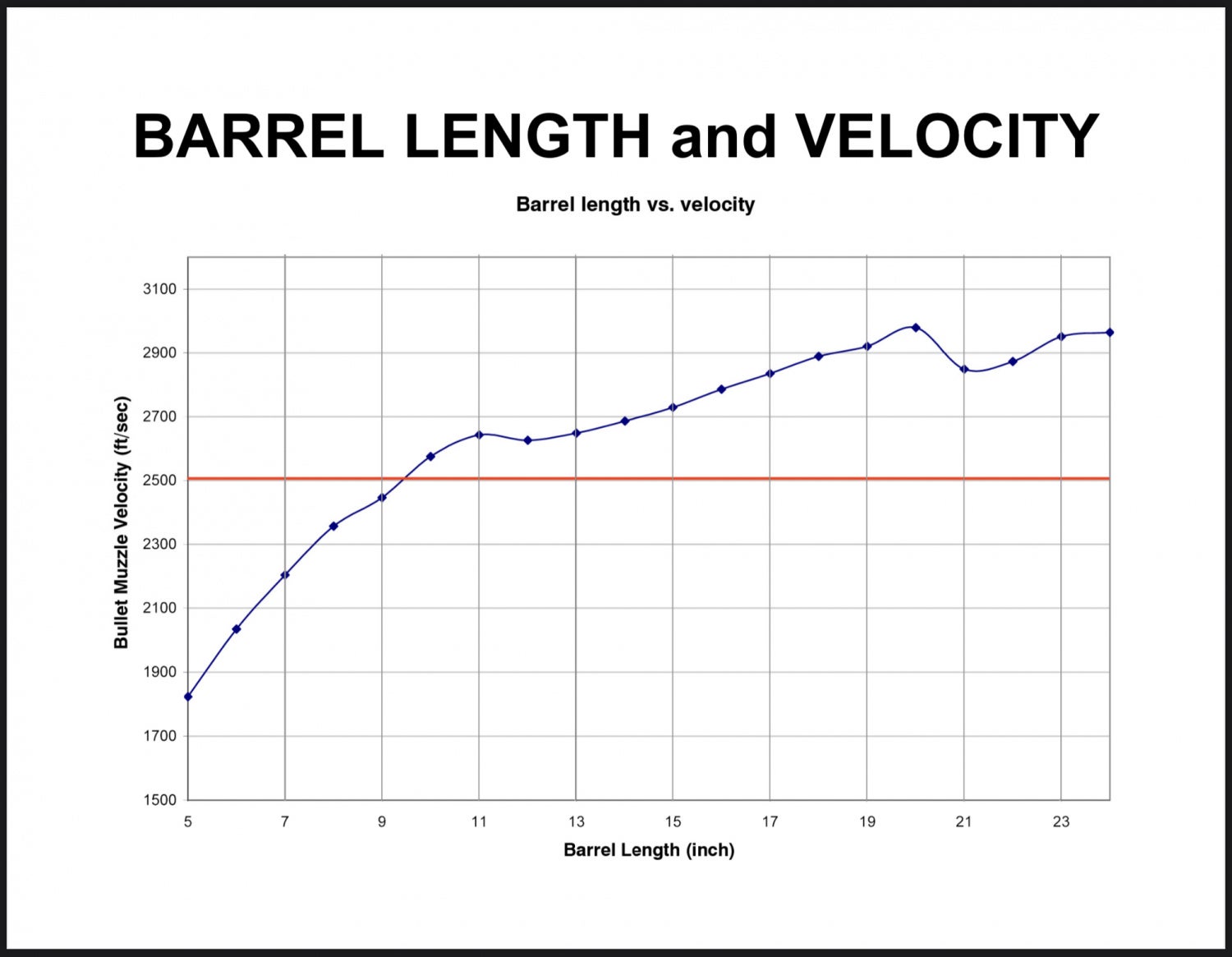
EFFECTS OF BARREL LENGTH ON BORE PRESSURE, PROJECTILE VELOCITY AND SOUND MEASUREMENT – Dater, Philip H. MD; Wong, Jason M.; 2010
Dater and Wong’s conclusions:
- Pressure in the bore (uncorking pressure) increases exponentially with decreasing barrel length.
- Non-suppressed sound pressure level increases exponentially with decreasing barrel length.
- Pressure in a suppressor’s entrance chamber appears to increase proportionately with uncorking bore pressure (based on previous studies).
- Maximum velocity is in a 20 inch barrel. Barrels at or less than 10 inches may not have adequate velocity (2,500 ft/sec) for a lethal wound channel at other than point-blank range with M855 ammunition. Dater/Wong 2010
The point is, if you are going to run a super short barrel, you need a suppressor that can withstand crazy pressures. Most manufacturers publish barrel length restrictions for each model, but if not, make sure to reach out to customer service for clarification before pulling that trigger for the first time.
Lastly, even if a manufacturer has no barrel length restrictions, a 5.56mm barrel under 10″ in length will cause a lot of wear on the blast baffle and blast chamber and will effectively reduce the suppressors overall service life. Keep that in mind.
FN SCAR 15-P
The SCAR is a piston operated firearm and can be tricky to suppress, with some suppressors causing increased piston/bolt speed that could damage the firearm. I have been told that “MIL/LE industry standard” suppressors like the Surefire SOCOM RC2 are generally acceptable and should not cause damage to the SCAR.
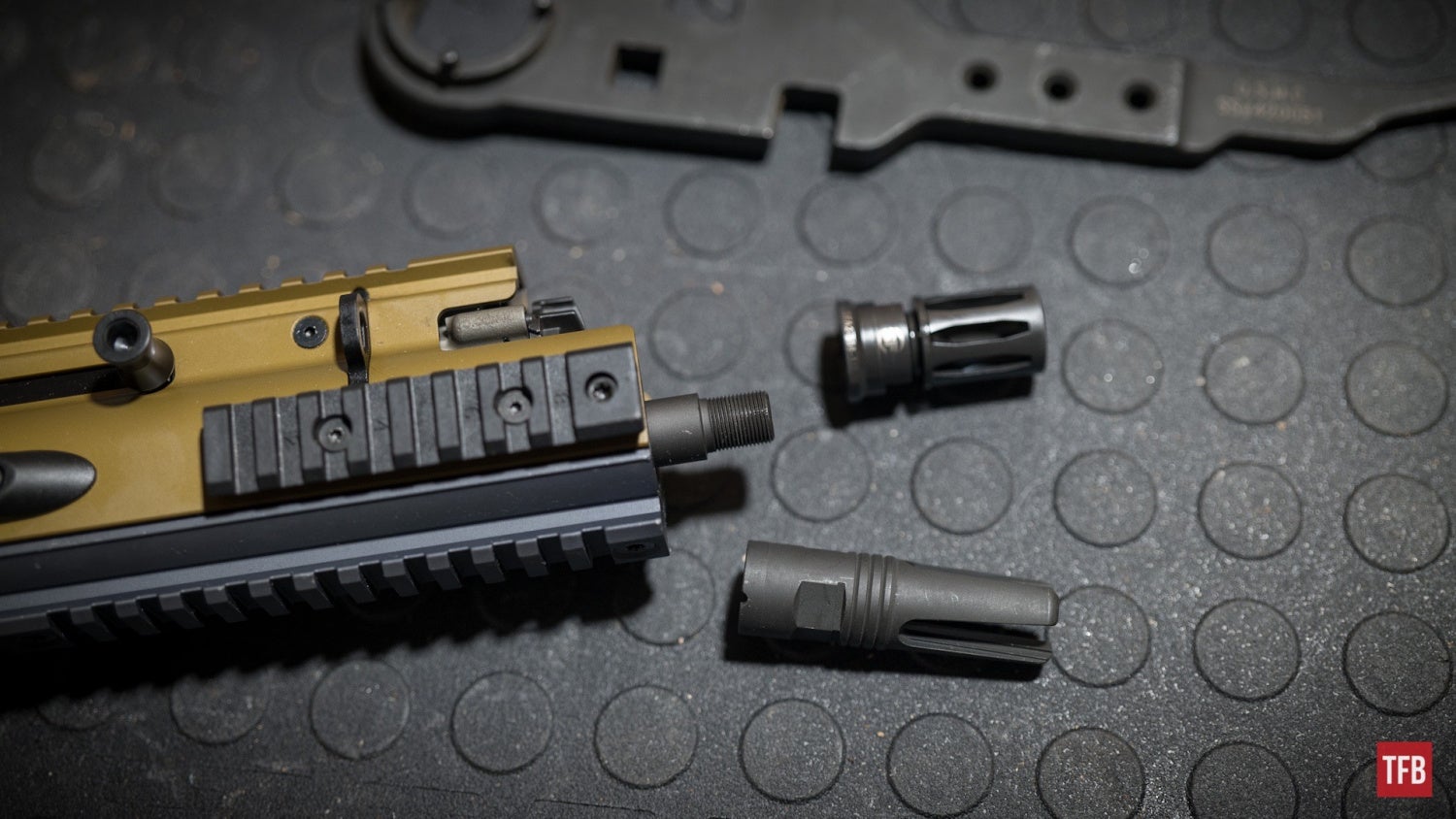
SILENCER SATURDAY #267: Living With A Super Short Barrel (TWSS)
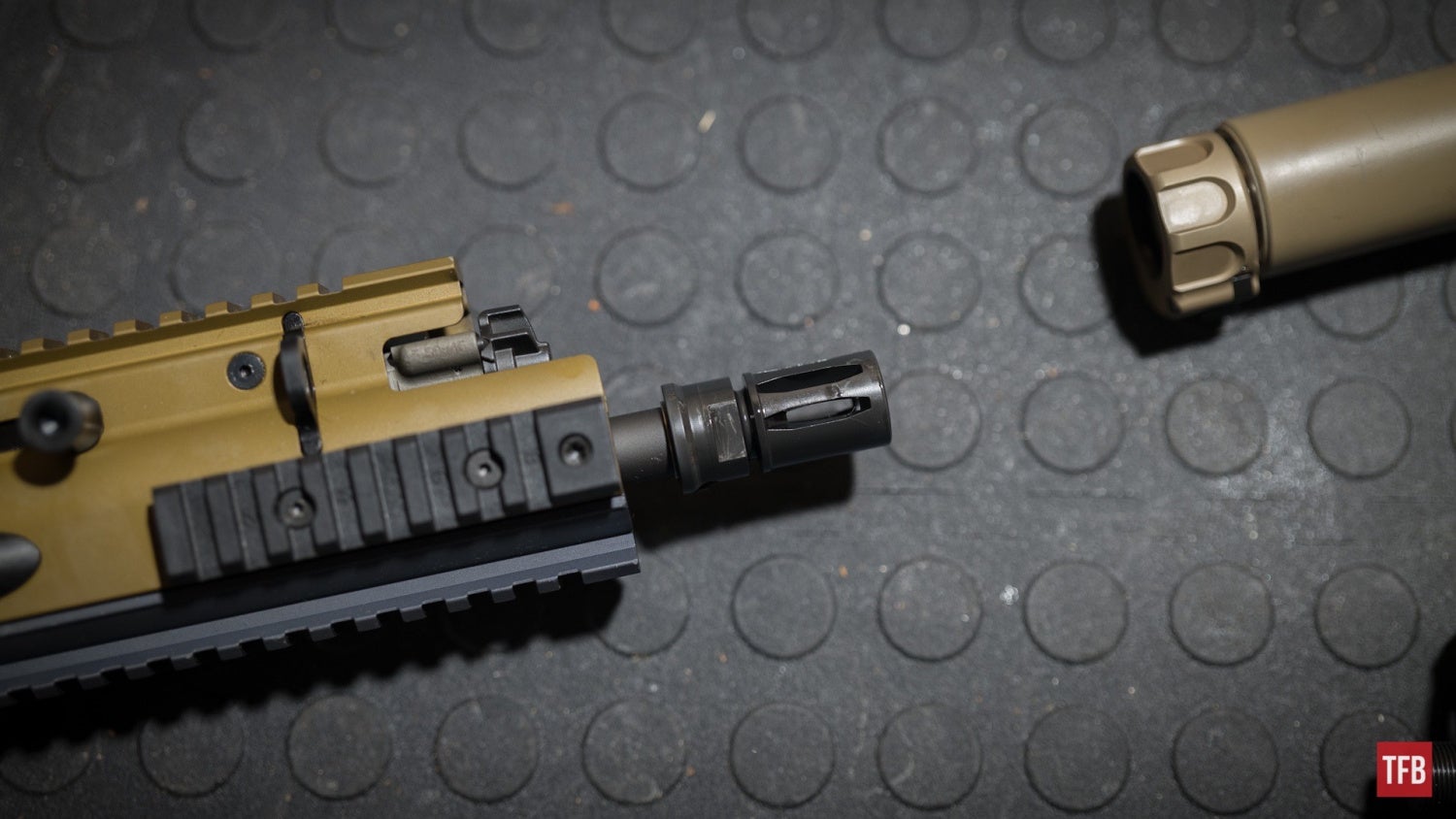
SILENCER SATURDAY #267: Living With A Super Short Barrel (TWSS)
I swapped out the included flash hider for a Surefire SFA2 mount and dropped on the SOCOM RC2.
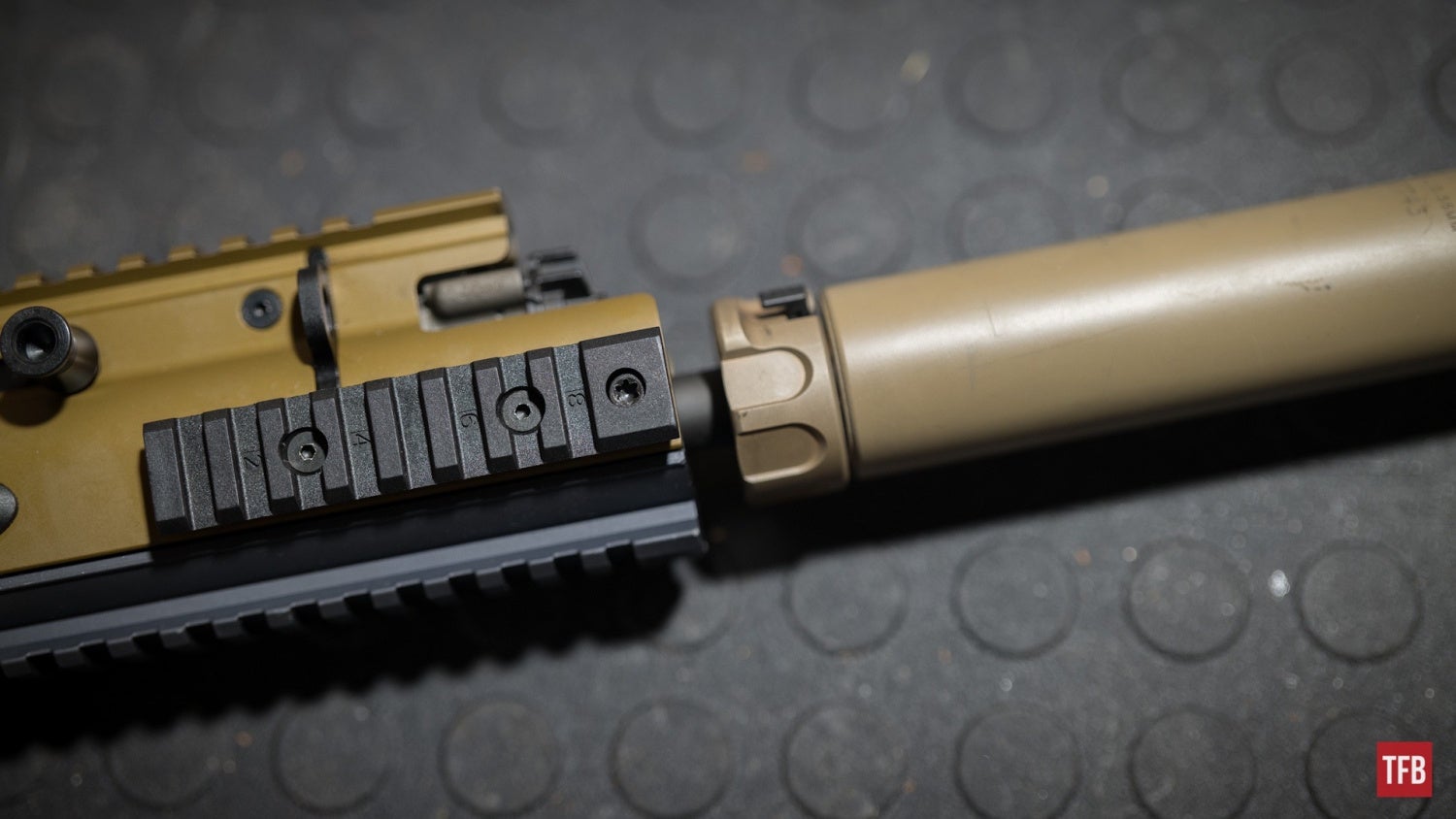
SILENCER SATURDAY #267: Living With A Super Short Barrel (TWSS)
There are a few suppressors that would consider to be up to the challenge of a 7.5″ 5.56 barrel, one of which would be the SIG Sauer SLX556-QD suppressor. It’s strength comes from the fact that it is made using additive manufacturing (no welds). And it also is designed to vent gas and pressure forward which reduces blowback.
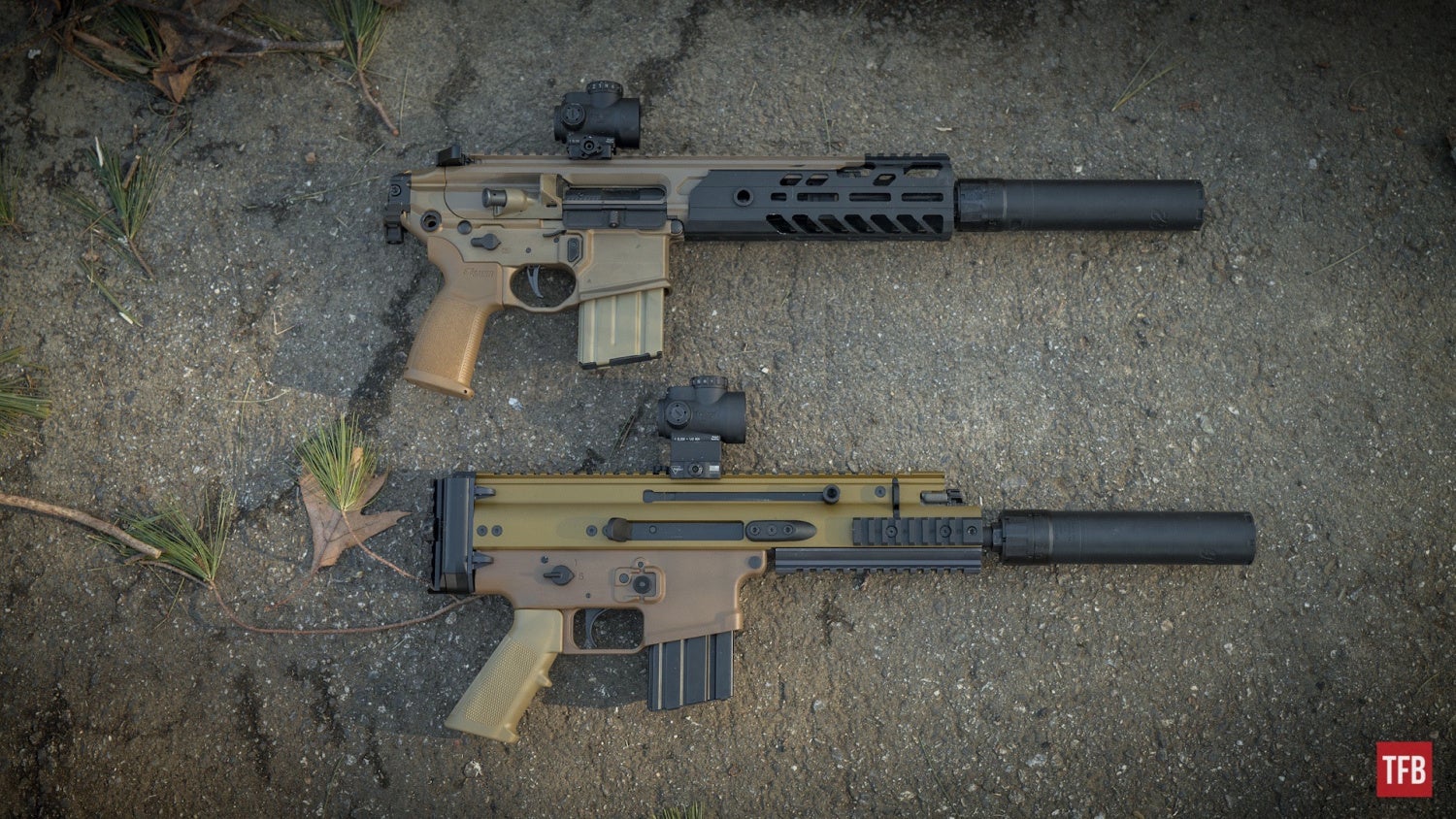
SILENCER SATURDAY #267: Living With A Super Short Barrel (TWSS)
Suppressing a 7.5″ 5.56mm rifle is no easy task. It was definitely loud, but much less punishing than shooting the SCAR 15-P unsuppressed.
If you want to suppress a super short barrel rifle, my suggestion is to pick a host that is chambered in a cartridge that is designed around super short barrels like the 300BLK. The FN SCAR 15-P will get a full review soon, but it won’t be for an episode of Silencer Saturday. It’s damn sexy, but it uncorks bullets with a lot of heat and pressure.
Have a great week. Be safe, have fun, and we’ll see you back here next weekend for another Silencer Saturday.
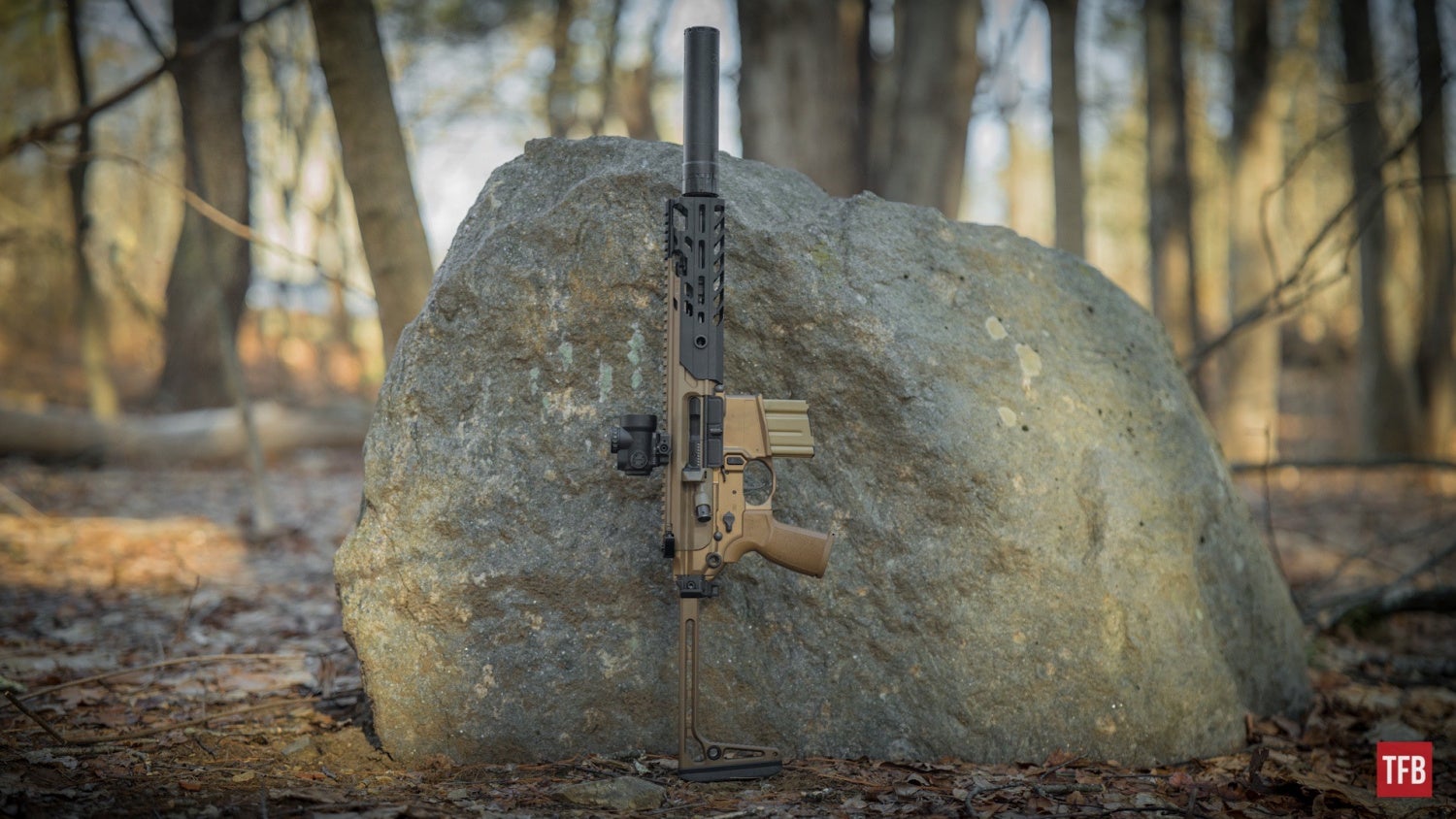
SILENCER SATURDAY #267: Living With A Super Short Barrel (TWSS)


